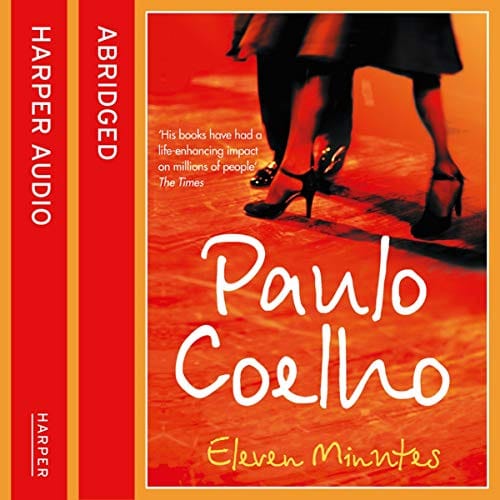Eleven Minutes: Exploring Desire, Love, and Self-Discovery
In Paulo Coelho's 'Eleven Minutes', a young woman explores desire, love, and purpose. Dive into the novel's plot, themes, symbols, and cultural impact.

Introduction: More Than Eleven Minutes
Paulo Coelho27s novel Eleven Minutes is often introduced with a single provocative hook: according to certain surveys, the average act of sexual intercourse lasts exactly eleven minutes. Yet the Brazilian author stretches that fleeting measure of time into a multifaceted exploration of desire, intimacy, spirituality, and the quest for identity. First published in 2003, the book follows a young Brazilian woman who journeys from a small town to the red-light district of Geneva in search of both financial security and personal meaning. Far from mere erotic fiction, the story challenges readers to consider how body and soul intersect in the pursuit of authentic love.
Plot Summary: Maria27s Journey
The protagonist, Maria, begins as a bright yet economically disadvantaged girl in rural Brazil. A disappointing early relationship convinces her that true love is a myth; instead, she focuses on earning money abroad. After a brief stint as a samba dancer in Rio de Janeiro, she accepts a modeling opportunity in Switzerland that quickly unravels, leaving her alone, broke, and homesick. Desperation leads Maria to a glamourous nightclub called Rue de Berne, where she becomes a high-end sex worker. Over the course of a year27s diary-style entries, Maria documents her encounters, her doubts, and her growing sense of autonomy. Everything changes when she meets Ralf Hart, a talented painter who claims to see her 22inner light.22 Their connection forces Maria to examine whether love can coexist with the physical rituals she has reduced to a calculated transaction.
The Meaning Behind the Title
Why eleven minutes? In the novel, the figure serves as a reminder of modern life27s fixation on speed and superficial gratification. Coelho contrasts the brief physical act with the years of emotional aftermath it can unleash, inviting readers to look beyond statistics and question how we measure fulfillment. The title also echoes Maria27s internal clock: every night she sells precisely those minutes, yet her deeper longing remains unmet. This irony prompts the central question—can pleasure purchased on a stopwatch ever match the timeless experience of genuine love?
Major Themes
Desire vs. Love
Eleven Minutes distinguishes erotic desire from abiding love without condemning either. Maria discovers that desire can be a conduit to self-knowledge, provided it is respected as sacred rather than shameful. Her evolving bond with Ralf demonstrates that love transforms physical intimacy from a commercial product into a shared spiritual journey.
Freedom and Choice
Throughout the novel, Maria refuses to frame herself as a victim. She negotiates prices, sets boundaries, and even times her sessions, exercising more agency than many characters in socially approved professions. Coelho suggests that liberation stems not from circumstances but from the conscious choices we make within them.
Spirituality of the Body
Coelho, long fascinated by mysticism, portrays the body as a temple capable of channeling divine energy. Maria27s exploration of sadomasochistic rituals and sacred prostitution traditions underscores the paradox: the same act that can degrade may also elevate, depending on intention and awareness.
Symbolism and Motifs
Several recurring images deepen the narrative27s resonance. The rope featured in Maria27s S&M experiments symbolizes both bondage and connection, hinting at how relationships tie us together while limiting absolute freedom. The Geneva River, where Maria often walks alone, represents the inexorable flow of life, carrying her from innocence to experience. Finally, light in Ralf27s paintings embodies the inner essence each character struggles to recognize within themselves.
Character Analysis
Maria is neither saint nor sinner; she is a pragmatic dreamer whose candid diary entries reveal humor, fear, and fierce determination. Ralf Hart, though less fleshed out, functions as a catalyst, reflecting Maria27s hidden potential like a mirror. Secondary figures—such as Milan, the club27s pragmatic madam, and Nyah, a fellow Brazilian sex worker—illustrate alternative paths. Each character27s response to the same environment underscores Coelho27s thesis: meaning is self-assigned.
Critical Reception and Cultural Impact
Upon release, Eleven Minutes sparked controversy for its explicit content, yet it quickly climbed bestseller lists worldwide. Critics praised Coelho27s lyrical prose and unflinching honesty, while detractors deemed the narrative simplistic. Over time, the novel has earned recognition as an influential text in conversations about sex-positive feminism, especially in Latin America and Europe. Book clubs and university courses frequently pair it with works like Memoirs of a Geisha and Fear of Flying to debate commercialization of intimacy, making it a staple in contemporary literature syllabi.
Why Read Eleven Minutes Today?
In an era when swipe-right culture reduces human connection to instant gratification, Coelho27s meditation on the cost of selling or withholding desire feels more relevant than ever. Readers searching for an empowering protagonist will find Maria27s refusal to surrender her agency inspiring. Those curious about the intersection of sexuality and spirituality will discover that the novel offers a rare, non-judgmental space to explore taboo topics. Finally, the book27s brisk pacing and accessible language make it an engaging introduction to global literature beyond the Anglo-American canon.
Conclusion: Beyond the Last Page
By the end of Eleven Minutes, Maria stands at a crossroads between returning home, pursuing art with Ralf, or carving an entirely new path. Coelho deliberately omits a tidy conclusion, echoing life27s unfinished nature. Yet the message rings clear: true intimacy demands vulnerability, courage, and time—far more than eleven minutes. Whether you27re drawn by the erotic premise or the philosophical undertones, this novel offers a mirror for your own desires and doubts. Turn the final page, and you may find the story27s real ending begins in your own heart.



